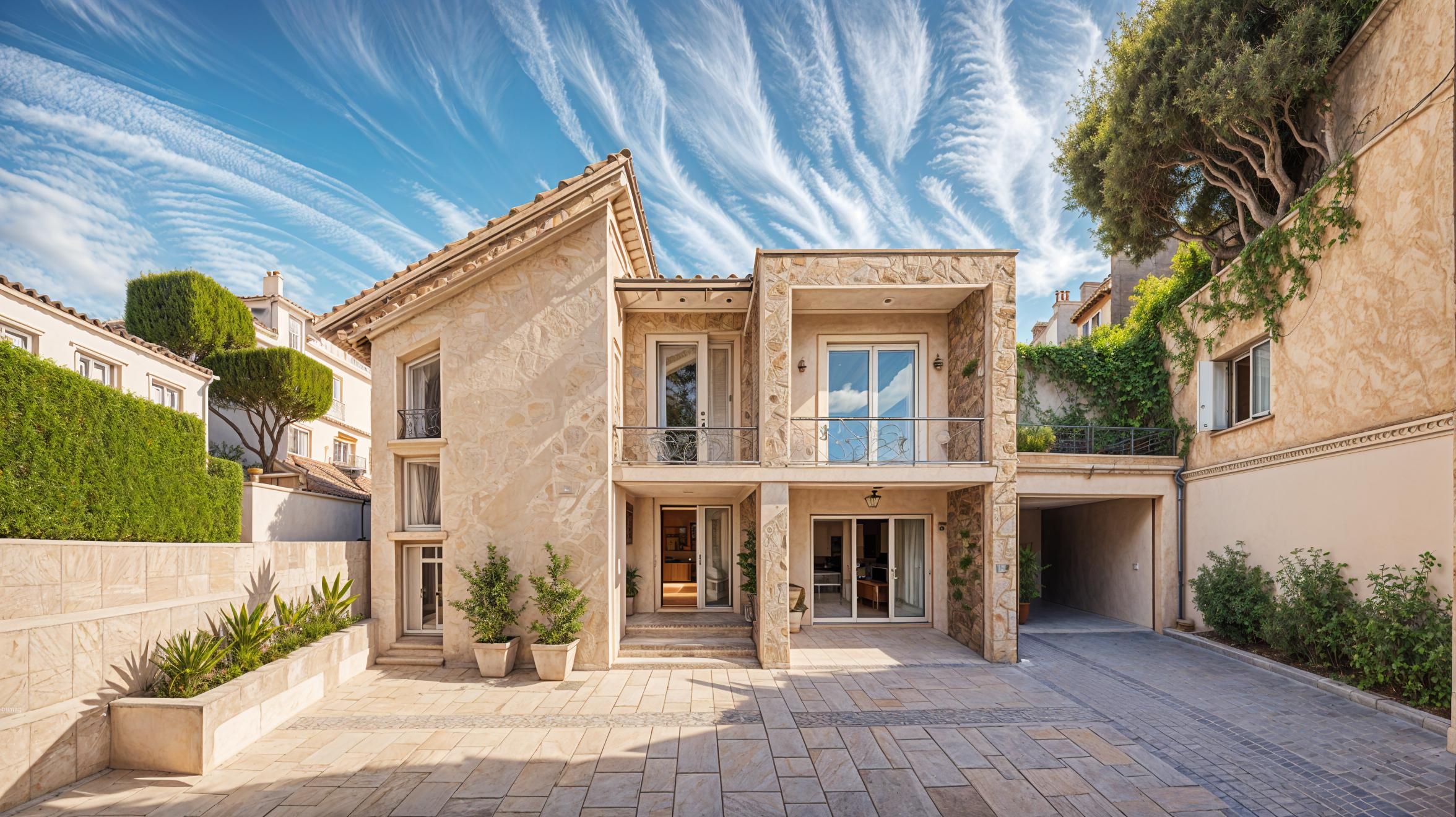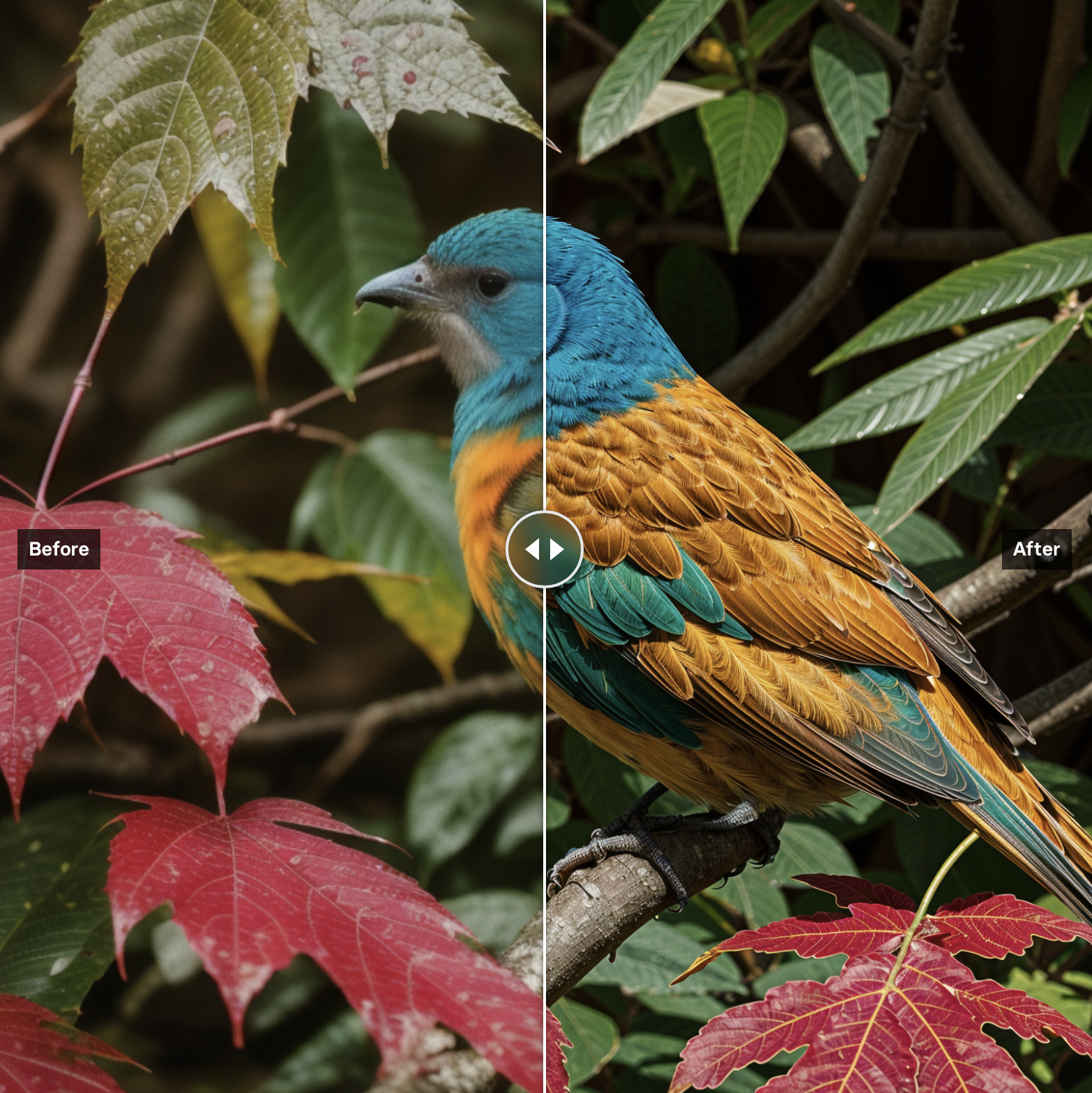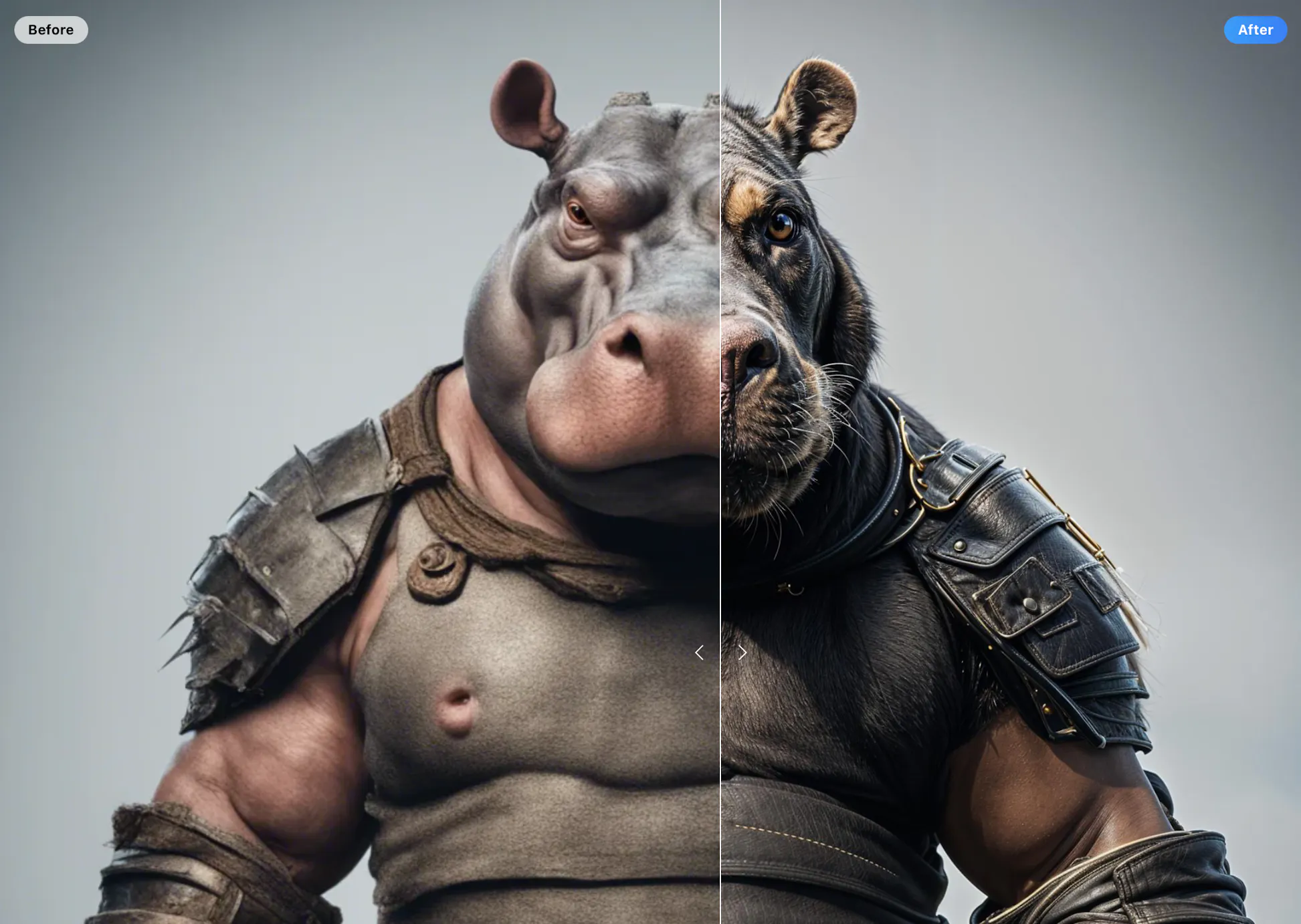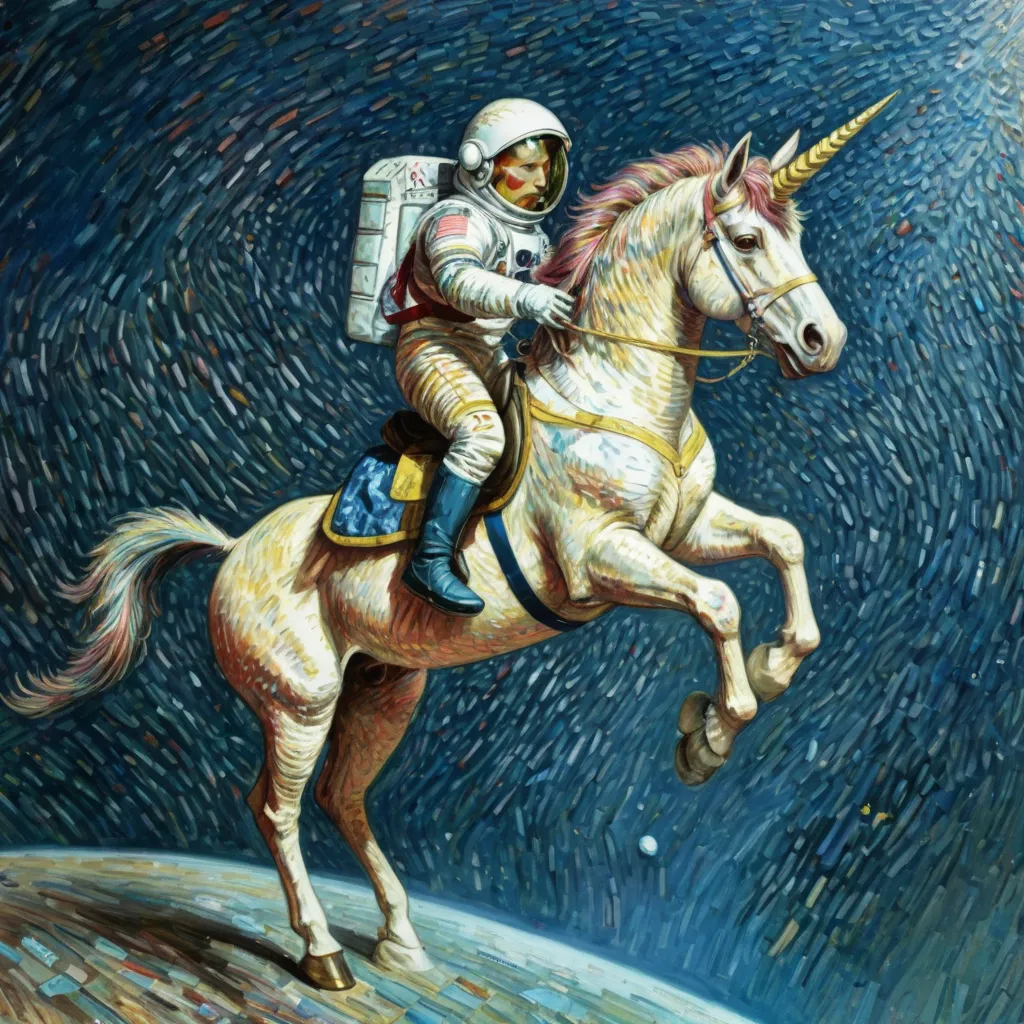style-transfer
Maintainer: philz1337x

50

| Property | Value |
|---|---|
| Model Link | View on Replicate |
| API Spec | View on Replicate |
| Github Link | View on Github |
| Paper Link | View on Arxiv |
Create account to get full access
Model overview
The style-transfer model allows you to apply the style of one image to another. This can be useful for creating artistic renditions of your photos or generating unique artwork. Compared to similar models like clarity-upscaler, style-transfer focuses on transferring the artistic style rather than just enhancing image quality. It can produce results that are more expressive and visually striking than a pure upscaler.
Model inputs and outputs
The style-transfer model takes two key inputs: the image you want to apply the style to, and the reference image that will provide the artistic style. You can also adjust parameters like the strength of the style transfer and the number of inference steps to control the output.
Inputs
- image: The image you want to apply the style to
- image_style: The reference image that will provide the artistic style
- prompt: A text prompt to guide the style transfer (optional)
- negative_prompt: A text prompt to avoid certain styles or elements (optional)
- guidance_scale: The scale for classifier-free guidance (default 8)
- style_strength: How much the style should be applied (default 0.4)
- structure_strength: How much the structure should be preserved (default 0.6)
- num_inference_steps: The number of denoising steps (default 30)
- seed: A random seed value (optional)
Outputs
- An array of one or more images with the applied style transfer
Capabilities
The style-transfer model can take a wide variety of input images and apply diverse artistic styles to them. It can create impressionist, abstract, or surrealist interpretations of your photos, seamlessly blending the content and style. The results are often striking and unique, opening up new creative possibilities.
What can I use it for?
You can use the style-transfer model to create visually arresting artwork from your own photos. This could be for personal projects, to sell as digital art, or to enhance marketing materials. The model works well with human portraits, landscapes, and other common photographic subjects.
If you're not comfortable using the command-line tools, you can also try the paid version at ClarityAI.cc, which provides a user-friendly web interface for the style-transfer model.
Things to try
Experiment with different reference images to see how the style transfer affects the output. Try using abstract paintings, classic works of art, or even unusual textures as the style source. You can also play with the strength parameters to find the right balance between preserving the original image and applying the new style.
This summary was produced with help from an AI and may contain inaccuracies - check out the links to read the original source documents!
Related Models

clarity-upscaler

5.6K
The clarity-upscaler is a high-resolution image upscaler and enhancer developed by AI model creator philz1337x. It is a free and open-source alternative to the commercial Magnific tool, allowing users to upscale and improve image quality. The model can handle a variety of input images and provides a range of customization options to fine-tune the upscaling process. Model inputs and outputs The clarity-upscaler takes an input image and a set of parameters to control the upscaling process. Users can adjust the seed, prompt, dynamic range, creativity, resemblance, scale factor, tiling, and more. The model outputs one or more high-resolution, enhanced versions of the input image. Inputs Image**: The input image to be upscaled and enhanced Prompt**: A textual description to guide the upscaling process Seed**: A random seed value to control the output randomness Dynamic**: The HDR range to use, from 3 to 9 Creativity**: The level of creativity to apply, from 0.3 to 0.9 Resemblance**: The level of resemblance to the input image, from 0.3 to 1.6 Scale Factor**: The factor to scale the image up, typically 2x Tiling Width/Height**: The size of tiles used for fractality, lower values increase fractality Lora Links**: Links to Lora models to use during upscaling Downscaling**: Whether to downscale the input image before upscaling Outputs One or more high-resolution, enhanced images based on the input and parameters Capabilities The clarity-upscaler can dramatically improve the quality and detail of input images through its advanced upscaling and enhancement algorithms. It can handle a wide range of input images, from photographs to digital art, and provide customizable results. The model has been optimized for speed and can produce high-quality outputs quickly. What can I use it for? The clarity-upscaler is a versatile tool that can be used for a variety of creative and practical applications. Some potential use cases include: Enhancing low-resolution images for print or web use Upscaling and improving the quality of digital art and illustrations Generating high-quality backgrounds, textures, or elements for visual design projects Improving the visual quality of images for use in presentations, social media, or other digital content Things to try One interesting feature of the clarity-upscaler is its ability to adjust the "fractality" of the output image by manipulating the tiling width and height parameters. Lower values for these parameters can introduce more fractality, creating a unique and visually striking effect. Users can experiment with different combinations of these settings to achieve their desired aesthetic. Another useful feature is the ability to incorporate Lora models into the upscaling process. Lora models can introduce additional style, details, and characteristics to the output, allowing users to further customize the results. Exploring different Lora models and mixing them with the clarity-upscaler settings can lead to a wide range of creative possibilities.
Updated Invalid Date

multidiffusion-upscaler

4
The multidiffusion-upscaler is a high-resolution image upscaler and enhancer created by Replicate user philz1337x. It is similar to models like the clarity-upscaler, style-transfer, and real-esrgan which also focus on image upscaling and enhancement. The model is designed to produce high-quality, detailed images from lower-resolution inputs. Model inputs and outputs The multidiffusion-upscaler takes in an image, along with various parameters like seed, width, height, prompts, and control net settings. It then outputs one or more upscaled and enhanced images based on the input. The model can handle a variety of input image types and sizes, and the output resolution can be adjusted as needed. Inputs Image**: The input image to be upscaled and enhanced Seed**: A random seed value to control the output Width/Height**: The desired output image dimensions Prompt**: A text prompt to guide the image generation SD VAE, SD Model, Scheduler, Controlnet settings**: Various model checkpoint and configuration settings Outputs Output Image(s)**: One or more upscaled and enhanced versions of the input image Capabilities The multidiffusion-upscaler is capable of producing high-quality, detailed images from lower-resolution inputs. It can effectively enlarge and sharpen images while preserving important details and features. The model also allows for fine-tuning of the output through prompts and control net settings, enabling users to customize the style and content of the generated images. What can I use it for? The multidiffusion-upscaler can be useful for a variety of applications, such as: Enhancing low-resolution images for use in presentations, publications, or websites Upscaling and improving the quality of images for social media or e-commerce Generating high-quality images for use in creative projects, such as digital art or visual design Experimenting with different prompts and control net settings to explore the creative potential of the model Users can leverage the clarity-upscaler or style-transfer models in conjunction with the multidiffusion-upscaler to further enhance and refine their image outputs. Things to try One interesting aspect of the multidiffusion-upscaler is its use of tiled diffusion, which allows for efficient processing of large images. Users can experiment with the various tiled diffusion settings, such as tile size and overlap, to find the optimal balance between speed and output quality. Additionally, the model's integration with control net technology provides opportunities for users to explore how different control net models and configurations can impact the final image. Experimenting with different control net settings, such as the control mode and guidance, can lead to unique and unexpected results.
Updated Invalid Date

magic-style-transfer

3
The magic-style-transfer model is a powerful tool for restyling images with the style of another image. Developed by batouresearch, this model is a great alternative to other style transfer models like style-transfer and style-transfer. It can also be used in conjunction with the magic-image-refiner model to further enhance the quality and detail of the results. Model inputs and outputs The magic-style-transfer model takes several inputs, including an input image, a prompt, and optional parameters like seed, IP image, and LoRA weights. The model then generates one or more output images that have the style of the input image applied to them. Inputs Image**: The input image to be restyled Prompt**: A text prompt describing the desired output Seed**: A random seed to control the output IP Image**: An additional input image for img2img or inpaint mode IP Scale**: The strength of the IP Adapter Strength**: The denoising strength when img2img is active Scheduler**: The scheduler to use LoRA Scale**: The LoRA additive scale Num Outputs**: The number of images to generate LoRA Weights**: The Replicate LoRA weights to use Guidance Scale**: The scale for classifier-free guidance Resizing Scale**: The scale of the solid margin Apply Watermark**: Whether to apply a watermark to the output Negative Prompt**: A negative prompt to guide the output Background Color**: The color to replace the alpha channel with Num Inference Steps**: The number of denoising steps Condition Canny Scale**: The scale for the Canny edge condition Condition Depth Scale**: The scale for the depth condition Outputs Output Images**: One or more images with the input image's style applied Capabilities The magic-style-transfer model can effectively apply the style of one image to another, creating unique and visually striking results. It can handle a wide range of input images and prompts, and the ability to fine-tune the model with LoRA weights adds an extra level of customization. What can I use it for? The magic-style-transfer model is a great tool for creative projects, such as generating art, designing album covers, or creating unique visual content for social media. By combining the style of one image with the content of another, you can produce highly compelling and original imagery. The model can also be used in commercial applications, such as product visualizations or marketing materials, where a distinctive visual style is desired. Things to try One interesting aspect of the magic-style-transfer model is its ability to handle a variety of input types, from natural images to more abstract or stylized artwork. Try experimenting with different input images and prompts to see how the model responds, and don't be afraid to push the boundaries of what it can do. You might be surprised by the unique and unexpected results you can achieve.
Updated Invalid Date

style-transfer

130
The style-transfer model allows you to transfer the style of one image to another. This can be useful for creating artistic and visually interesting images by blending the content of one image with the style of another. The model is similar to other image manipulation models like become-image and image-merger, which can be used to adapt or combine images in different ways. Model inputs and outputs The style-transfer model takes in a content image and a style image, and generates a new image that combines the content of the first image with the style of the second. Users can also provide additional inputs like a prompt, negative prompt, and various parameters to control the output. Inputs Style Image**: An image to copy the style from Content Image**: An image to copy the content from Prompt**: A description of the desired output image Negative Prompt**: Things you do not want to see in the output image Width/Height**: The size of the output image Output Format/Quality**: The format and quality of the output image Number of Images**: The number of images to generate Structure Depth/Denoising Strength**: Controls for the depth and denoising of the output image Outputs Output Images**: One or more images generated by the model Capabilities The style-transfer model can be used to create unique and visually striking images by blending the content of one image with the style of another. It can be used to transform photographs into paintings, cartoons, or other artistic styles, or to create surreal and imaginative compositions. What can I use it for? The style-transfer model could be used for a variety of creative projects, such as generating album covers, book illustrations, or promotional materials. It could also be used to create unique artwork for personal use or to sell on platforms like Etsy or DeviantArt. Additionally, the model could be incorporated into web applications or mobile apps that allow users to experiment with different artistic styles. Things to try One interesting thing to try with the style-transfer model is to experiment with different combinations of content and style images. For example, you could take a photograph of a landscape and blend it with the style of a Van Gogh painting, or take a portrait and blend it with the style of a comic book. The model allows for a lot of creative exploration and experimentation.
Updated Invalid Date